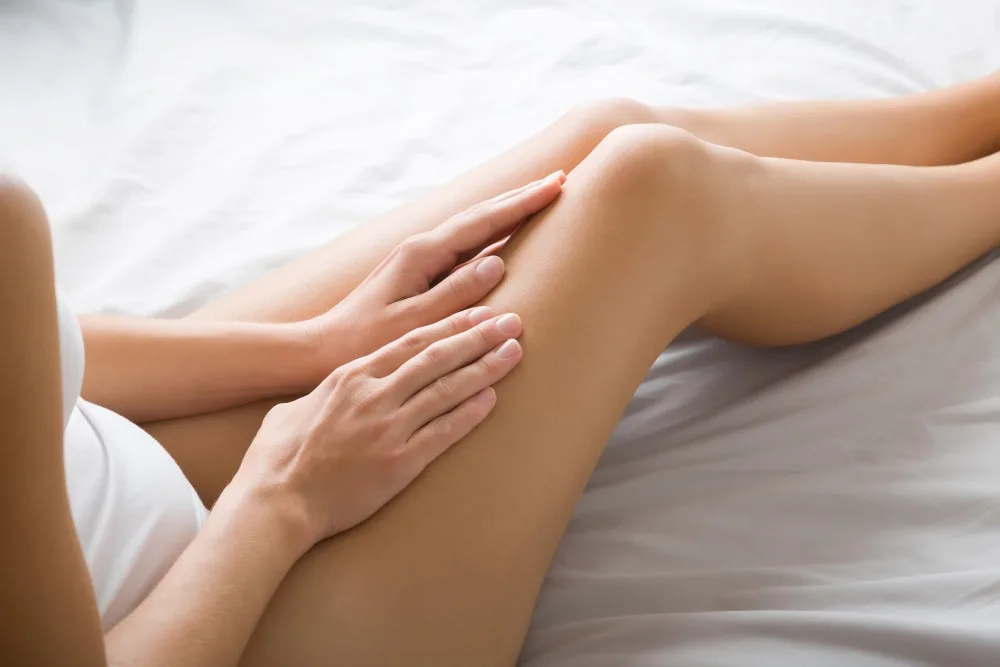It’s not uncommon to feel a little self-conscious about certain areas of your body—especially when it comes to the skin on your thighs or intimate areas. Darker skin between the thighs happens to a lot of people and can be caused by things like friction, hormonal changes, weight fluctuations, or even inflammation. While it’s usually harmless, it can still make some people feel insecure.
If you’ve been thinking about evening out the skin tone in this area, you’ve probably come across treatments like skin bleaching, also known as intimate lightening.
In this guide, we’ll break down what causes skin darkening between the thighs and walk you through the various skin bleaching methods. Whether you’re considering home remedies or professional procedures, you’ll find helpful tips to get the best and safest results.
Understanding Skin Discoloration Between the Thighs
The skin area between your thighs is commonly sensitive, thus resulting in darkening of this region due to friction. Common causes would include:
Friction
Continuous friction of the thighs with each other, particularly with increased physical activity or in warmer climates, can result in irritation and darkening.
Hormones
Hormonal changes can be from pregnancy, menopause, or other causes like polycystic ovary syndrome.
Hyperpigmentation
Skin discoloration can occur anywhere, especially in areas such as the inner thigh area.
Other causes could include medical conditions, such as acanthosis nigricans, which is associated with insulin resistance.
Advantages of Intimate Skin Bleaching
Aesthetic value
Lightening of skin tones whitens and, therefore, even out the complexion to increase self-esteem.
Skin Renewal
Many bleaching treatments exfoliate and renew the skin, too.
Versatility
Products and procedures may be indicated for other areas of hyperpigmentation, such as the underarms or elbows.
Skin Bleaching Methods For Between the Thighs
A number of options are present which can be used for whitening the skin between your thighs, ranging from chemical to natural. Their short description is as follows:
Topical Creams and Gels
- Hydroquinone: Hydroquinone acts by inhibiting the biosynthesis of melanin, resulting in skin lightening. It comes in over-the-counter preparations, up to 2%, and stronger prescription formulations, up to 4%. While effective, it needs to be used very cautiously because of possible irritation or ochronosis in the event of long-term usage.
- Kojic Acid: Kojic acid is a fungal extract that generally represents a less irritating alternative to hydroquinone. It acts by inhibiting the enzyme tyrosinase, which is involved in the pathway of melanin synthesis.
- Azelaic Acid: Azelaic acid contains gentle brightening and anti-inflammatory properties, making it suitable for sensitive skin.
- Niacinamide: Niacinamide is a form of Vitamin B3, which reduces pigmentation and improves barrier strength.
Home Remedies
The following home remedies will give the skin an air of fairness for those who like going natural:
- Lemon Juice: Rich in vitamin C, lemon juice can brighten dark areas. However, its acidic nature may irritate sensitive skin, so it should be diluted and applied cautiously.
- Aloe vera: Aloe vera contains aloin, a natural depigmenting agent. It soothes irritated skin as well.
- Turmeric: Curcumin, an active principle of turmeric, exhibits skin whitening and anti-inflammatory activity. It is used as a fine paste prepared by mixing turmeric with milk or curd.
- Potato Juice: Potatoes contain an enzyme, catecholase, which is believed to reduce melanin production. The application of potato juice can help lighten skin over time.
Professional Procedures
- Chemical Peels: Chemical peels, with the help of dermatologists, using acids like glycolic acid or salicylic acid, help exfoliate the skin and reduce pigmentation.
- Laser Treatment: Laser treatments burn the melanin deposits to lighten the skin by targeting these areas. However, it is an effective yet highly pricey method.
- Microdermabrasion: This procedure removes the outer layer of skin, allowing regrowth of new skin that is even in pigmentation.
Best Practices for Safe Intimate Skin Bleaching
Consult a Professional
A dermatologist will evaluate your skin condition and stage the necessary treatments.
Follow Instructions
Follow the product guidelines and instructions, and do not overuse the products.
Hydrate and Moisturize
Hydrating the skin minimizes irritations and improves the result of the treatment.
Wear Comfortable Clothes
It reduces friction between the thighs, thus preventing further discoloration.
Alternatives to Skin Bleaching
Bleaching If bleaching is not your cup of tea, here are some alternatives.
Exfoliation
Exfoliation around the thighs can be done consistently to remove the dead skin cells, which cause discoloration.
Skin-Friendly Fabrics
Wearing breathable, loose clothes helps to reduce friction and irritation.
Weight Control
Maintaining weight can reduce friction between the thighs and prevent darkening.
If you are interested in intimate bleaching, call the office of Dr. Ghozland today at 310-393-9359 and we will be happy to get you scheduled for an appointment!
